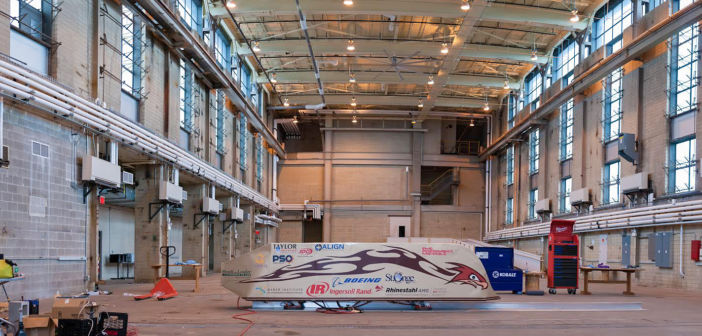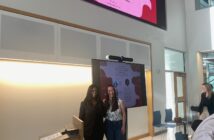Lehigh’s Hyperloop team was the last pod standing among undergraduate teams in the SpaceX Hyperloop Competition, held Jan. 27-29 in Hawthorne, California.
Although Lehigh’s pod was unable to advance to the final round of competition due to its size, the team still performed the best out of all the undergraduate groups entered in the event. After 19 months of preparation and construction, this was not the outcome the group was looking for.
Despite the setback, team member Tech Tanasarnsopaporn, ’19, was proud of his team’s efforts.
“Our pod was the most scalable and closest to the idea of the ‘ideal Hyperloop,'” Tanasarnsopaporn said. “Many of the other teams used very complicated electrical systems and materials. Ours was the least expensive, the fastest and probably the safest.”
The Hyperloop, developed by SpaceX CEO Elon Musk, is a futuristic form of transportation that accelerates a pod up to 750 mph through a narrow tube. If completed and produced, the Hyperloop would allow people to commute between cities quickly and affordably. SpaceX’s competition had 27 teams present their own pod designs, awarding schools that created pods with the highest speed, safety and performance.
After beginning development in the fall of 2015, Lehigh’s team now consists of more than 30 active members. Not all of the members are engineers. Students from the business and arts and sciences schools help with sponsorship, getting donors and raising awareness for the competition.
“When I first heard about this competition, I was immediately intrigued,” Lehigh team member Gencer Ates, ’19, said. “I knew I had to join. This was going to be big.”
After being cleared for its designs, the team traveled to California in January to present its final Hyperloop idea. There, it faced 26 other college teams from around the world, many of which were largely made up of graduate students.
Team member Emma Isaacs, ’19, said Lehigh’s pod was the largest, most powerful and most complex entry in the competition, with other groups often coming by to look at it or ask questions.
When the Lehigh students arrived in California, they were surprised by how friendly and helpful their competitors were. Tanasarnsopaporn said if someone needed to borrow a part, one team could ask another — teams were willing to help each other despite the pressure to win.
While the team said the friendly atmosphere of the competition was refreshing, it still presented some challenges. Ates said the competition wasn’t as well planned as he expected, saying it didn’t have the correct equipment to lift their pod.
“The public showcase was also poor in that they didn’t have anyone really checking to make sure everything was safe for everyone observing,” Ates said.
After advancing through the initial rounds, the Lehigh team was given the news that it would not be able to participate in the run down the mile-long track because of the time required for accommodation of the increased pod size. Instead, Tanasarnsopaporn said the team was taken out of the competition prematurely.
Lehigh was not the only group to be affected by this setback. The teams from University of Washington, University of Cincinnati and Virginia Tech were all unable to compete.
“We did all we could to be able to try to complete the run down the mile-long track,” Ates said. “If they let us in the tube, we would have showed them how good it actually was.”
The team said it isn’t going to let the disappointing aspects of the competition get it down. The group is looking for a new competition that will challenge it in the same way its 19 months of work on Hyperloop did.
“I was really impressed with our performance,” Tanasarnsopaporn said. “There were teams with 30-year-old graduate students competing against us that had much more experience and knowledge on the subject. I think it says a lot that we were able to hang in there with them, and get as far as we did.”
Correction: An earlier version of this story misstated the location of the competition. The competition was held in Hawthorne, California not College Station, Texas.






Comment policy
Comments posted to The Brown and White website are reviewed by a moderator before being approved. Incendiary speech or harassing language, including comments targeted at individuals, may be deemed unacceptable and not published. Spam and other soliciting will also be declined.
The Brown and White also reserves the right to not publish entirely anonymous comments.